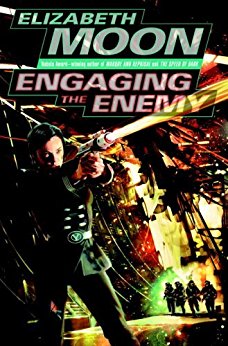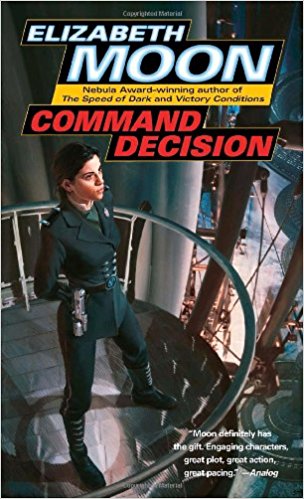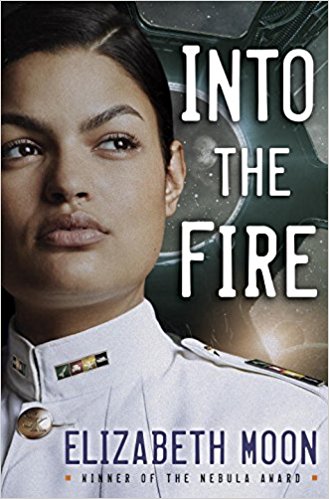(1) OFF THE TOP OF HER HEAD. In “Nattering Social Justice Cook: Celebrating Rainbow Hair”, Cat Rambo delves into the history and symbolism of the hairstyle.
A common adjective in many of the more conservative, alt-right, and other theater-of-outrage rants I’ve seen in the past couple of years is “rainbow-haired,” never in a positive sense. It’s usually paired with some form of “social justice warrior,” and often accompanied by an emotional catch-phrase or verbiage like “feels” or “drinking the tears.” There’s a lot of interesting stuff built into that particular fixation. So let’s dig around to find what’s contained in the phrase and its use in this pejorative sense….
Rainbow hair is grounded in a counter-cultural movement. It celebrates individuality and a certain DIY spirit (there is no shame in going to the salon for it, but I find it much more fun to do my own). It celebrates one’s appearance, draws the eye rather than shrinking away from it. It is something beautiful that those who don’t fit inside normal standards of beauty can have. It is playful, joyful, delightful at times.
Very recently it has spread like wildfire, and many of the people adopting it are millennials. This gives the anti-rainbow hair sentiment a double-whammy, providing an “oh these kids nowadays” moment while slamming anyone older for acting overly young. (Which implies that’s a bad thing, which isn’t a notion I agree with).
Here’s something that I think often makes conservative minds bristle: it confuses gender norms. In traditional thinking, men aren’t supposed to care about or celebrate their appearance in the way women are. But rainbow hair appears all over the gender spectrum. Pull in the strand of meaning associated with gay pride, and the objectionability quotient increases.
There’s a reason alt-right and other manifestations of conservative trollish rhetoric so often focuses on appearance, on fat-shaming or fuckability or even how a new Ken-doll wears their hair. It’s a reversion to the schoolyard insult, the way insecure children will be cruel to others in order to try to build their internal self-worth, a behavior many, but sadly not all, outgrow. Worthy of an essay in itself is the fact that it’s also behavior advantageous to advertisers: anxious consumers who want to fit in are willing to spend money in the effort.
(2) TURNOVER AT MAD. ComicsBeat knows the name of the next bullgoose loony: “Dept. of Funny Business: Bill Morrison is named new Executive Editor of Mad Magazine” .
Ending a suspenseful watch that lasted a few months, the white smoke has finally risen from DC Entertainment, signaling the election of a new pope of humor: Bill Morrison will be the new executive editor of Mad Magazine when it moves westward later this year.
…Well, every irreplaceable person seems irreplaceable until you find someone who will do the job differently but as well, and so it is with Morrison, an animation and comic veteran who has worked with the Bongo Comics line of Simpson Comics and many other hilarious things for years. He’s a great cartoonist himself and knows the score up and down and inside out.
(3) DORTMUND DOCKET. Detailed panel notes are the highlight of Tomas Cronholm’s report about “U-Con, Eurocon 2017”.
This was a fairly small Eurocon, with 375 attending members. The venue was some kind of school, with a big hall suitable for the main programme and some smaller rooms, a bar and a dealers’ area. Perfect for the size of the convention. Here are some reports from the programme items
(4) SPACE RELIC CONSERVATION. The Apollo XI spacecraft goes on the road: “Moonwalkers’ Apollo 11 Capsule Gets Needed Primping For Its Star Turn On Earth”
Until recently, the capsule sat in the main lobby of the National Air and Space Museum, where it had been since the museum opened in 1976. Conservator Lisa Young says that occasionally workers would open up its Plexiglas case to look it over or put in new lighting.
“But it never really went under a full examination or investigative analysis as to all of the certain materials on there, how stable they are,” says Young, who is working on the spacecraft now in a restoration hangar at the Smithsonian’s Steven F. Udvar-Hazy Center in Chantilly, Va., outside of Washington, D.C.
“Our big job as conservators right now is to figure out, if we are going to put it back on display permanently, what could be happening to it in 50 years,” says Young, who wants to prevent future deterioration.
(5) SKYFULL. SpaceX non-fiction double feature: “SpaceX completes launch and landing double bill”
Late on Friday, [SpaceX] used one of its refurbished Falcon 9 vehicles to put up a Bulgarian satellite from Florida.
Then on Sunday, SpaceX lofted another 10 spacecraft for telecommunications company Iridium. This time, the rocket flew out of California.
Both missions saw the Falcon first-stages come back to Earth under control to drone ships that had been positioned out on the ocean.
(6) AUTHORIAL PALETTE. There’s an overview of Ben Blatt’s research in this PRI article: “A journalist uses statistics to uncover authors’ ‘cinnamon words'”.
In the book, Blatt refers to these patterns as an author’s “stylistic fingerprint.” In one line of inquiry, he dusts for prints by calculating famous authors’ favorite words — the terms they use “at an extreme ratio” compared to other writers. He calls them “cinnamon words,” after an anecdote about the novelist Ray Bradbury.
“The motivation for looking at this was, I had read this book that just asked authors their favorite words, and Ray Bradbury said, ‘My favorite word is cinnamon because it reminds me of my grandmother’s pantry,’” Blatt says.
Sure enough, Bradbury’s fans can find the word cinnamon sprinkled throughout his writing, from descriptions of dusty roads and red-brown hills to the dark Egyptian tomb that “breathed out a sick exhalation of paprika, cinnamon and powdered camel dung.”
“So, he’s using it all the time,” Blatt says. “And building on that, I wanted to look at hundreds of other authors to see, were there other similar words that were jumping out of a writer’s inner voice.”
(7) FLUXBUN WARNING. The new PhotonFlux bar in Wellington, New Zealand will celebrate World UFO Day on July 2.
Years in the making Anton and Nina imaged what the future would be like. Will it be a post-apocalyptic survival or, a future where everybody wears the same thing and live in peace with robots in a bubble city.
Either way we want to take photos of it, gather evidence and travel there.
Photonflux is the place where possible future will be planned, discussed and changed.
The headquarters offers the revolutionary fluxbun, a fried dough filled with various flavours in a casual setting. For World UFO Day your filling will be in the hands of our creative chef.
However if you do not wish to be pleasantly surprised you can pick from our menu.
Chris Barlow gave it a thumbs up review on Google Plus.
One of a kind, a sci-fi themed bar in Wellington! Like stepping into another dimension – as you enter you’re immediately surrounded by eye-popping visuals straight out of the film set. Delicious “Flux buns” are teleported care of the in-house “galactic food truck”, complemented by an eclectic range of tap beer. A must see in Wellington.
(8) TRIVIAL TRIVIA
Theoretical physicist Stephen Hawking once hosted a reception for time travelers — but only advertised the event after it had ended. [Source: Huffington Post.]
(9) TODAY’S ANNIVERSARY BOOK
- June 26, 1997 — Harry Potter and the Philosopher’s Stone
20 years ago today a world that I had lived in alone was suddenly open to others. It's been wonderful. Thank you.#HarryPotter20
— J.K. Rowling (@jk_rowling) June 26, 2017
(10) LATE ADOPTER. In honor of the anniversary, John Scalzi tells how he found his way to Platform 9-3/4: “Harry Potter and the Initially Dismissive But Ultimately Appreciative Fan”.
But as it turns out neither Harry Potter nor J.K. Rowling were done with me. First, of course, it turned out that Harry Potter, Hermione Granger and Ron Weasley (and Rowling) weren’t Tears for Fears; they were the Beatles. And like the Beatles they weren’t just popular. They materially changed common culture — for a start, because they also changed the industry that they came out of, and the work of everyone in their field, who either responded to them or were influenced by them. Now, one may, like me, decide a phenomenon like that isn’t for you, but when literally(!) the world is changing to deal with and make room for that phenomenon, you still have to acknowledge that it’s there and work with it, or at least around it. Particularly when and if, like me, it comes out of the fields (in this case publishing and writing) you hope to be in, and in my case were eventually part of.
Second, I found another way in to Rowling’s wizarding world: through the movies, which were for me in a way that I, from that snippet of the second book, assumed the books were not. In retrospect this is not at all surprising — I was a professional film critic for several years, and I’ve written two books on film, and, as anyone who has ever read my novels can tell you, the storytelling structure of film is a huge influence on my storytelling in prose. My professional and creative interest in film helped that version of Harry Potter’s story speak to me.
(11) CIRCULAR REASONING SQUAD. In a post densely filled with animated GIFs, Sarah A. Hoyt responds to her critics on the right and what they had to say about her recent Sad Puppies-themed post for Mad Genius Club.
I did not feel guilty about a) not turning over Sad Puppies to someone else. Sad Puppies was Larry’s, then Brad’s, then Kate’s, and is now mine and next year will be mostly Amanda’s. We were in it from the beginning, and we have decided long ago that it would stay within the cabal, because none of us — all of us public figures to a degree or another — can afford to have something associated with our name taken down a crazy road without us having control over it. b) Not putting up a list for the Hugos — I was never going to put up a list. And I feel queasy about encouraging people to vote for an award that has been so thoroughly tainted. c) Not putting up a list for the Dragon. The Dragon is bigger than any of us. Some small names got in last year, but they were just because it was the first time. Right now I’m not big enough for the dragons, and I doubt any who covet it are either. d) I thought it was time to get out from between the fight of the Volksdeutshe expatriate and the guardians of chorfdom…
And she addresses specific criticisms about her latest Mad Genius Club post by saying she doesn’t understand why they’re down on her.
So, imagine my surprise when my post immediately attracted two commenters yelling at me for… well… actually I have no idea because most of it makes no sense. You guys can see the comments yourselves. There’s something about me looking down on people who don’t use the right oyster fork. You guys know my background and my question on this is… there’s a FORK? FOR OYSTERS? Why?
The other one apparently had something about me slandering other puppy-descended movements, which frankly… was news to me. First slander doesn’t mean what they think it means. Second, I’m fairly sure to slander them I’d have to mention them, and I don’t recall I have, except for Superversive, for whose anthology, Forbidden thoughts I wrote a short story. (It was as a press of that name needs to make it a rather more on-the-nose anthology than I’d have made it, but the point is I wasn’t the editor, the stories weren’t mine to choose, and it would be a funny world if my aesthetics were the only ones that counted, right? So, saying they have different tastes from me doesn’t count as a slander, right? particularly when I still wrote for them. Either that or I don’t know what slander means. Maybe I slandered them BY writing for them? I’m SOOOOOOO confused.)
(12) UNFRIENDLY FIRE. In addition to the comments there, Hoyt’s Mad Genius Club post about Sad Puppies also attracted some large bore artillery fire from Russell Newquist, “This Is What A Complete Leadership Failure Looks Like”, for the inactivity of SP5 in general, and her chastising Declan Finn for trying to jumpstart it last January.
Sarah Hoyt’s leadership of the Sad Puppies V campaign is a classic case study in leadership failure. If you ever want the absolute pitch perfect example of what not to do in a leadership position, look no further. This tale has everything: incompetence, insanity, bullying, harassment, technical difficulties, lack of vision, and just plain bitchiness. If I tried to create an example of bad leadership from scratch, I couldn’t make one this complete. If she were trying to destroy the Sad Puppies campaign and help the other side, she couldn’t have done a better job of it.
This, my friends, is a tail of abject, utter fail.
Sad Puppies V (SPV from here out) failed in literally every conceivable way, so this may take a bit. Bear with me….
(13) POLITICAL AUTOPSY. I spotted the Hoyt and Newquist links above in Camestros Felapton’s post “Sad Popcorn” where he tries to make sense of it all. If that’s possible.
(14) D&D HISTORY. Cecilia D’Anastasio tells Kotaku readers “Dungeons & Dragons Wouldn’t Be What It Is Today Without These Women”, though her very first illustration seems strangely out of synch with the rest of her case:
Almost every copy of the first Dungeons & Dragons adventure written by a woman is buried in a landfill in Lake Geneva, Wisconsin.
Those copies, published in 1980, were the masterwork of a game designer named Jean Wells, who worked for D&D’s first publisher, TSR. Wells designed Palace of the Silver Princess to her tastes, and with no regard for TSR’s mandate to make the game more kid-friendly. At one point in the module, players encounter a beautiful young woman hanging from the ceiling, naked, by her own hair. “Nine ugly men can be seen poking their swords lightly into her flesh, all the while taunting her in an unknown language,” the module reads. In-game, this scene turns out to be a simple magical illusion—but the accompanying illustration included in the module that TSR shipped to hobby shops nationally was not.
“A little bit of bondage here, a little torture there, worked its way into the Palace of the Silver Princess module,” Stephen Sullivan, a close friend of Wells and the adventure’s editor, told me. After it was properly reviewed—post-production—TSR’s executives went ballistic. Seventy-two hours after Palace of the Silver Princess was released, it was retracted.
“It was what Jean wanted it to be,” Sullivan said of the module. (Wells passed away in 2012.) “It was her baby. And for another place and another time, it probably would have been just perfect,” Sullivan said. Those retracted modules, now dubbed the “orange versions,” are buried somewhere under Lake Geneva’s flat, Midwestern landscape. It was soon rewritten by D&D designer Tom Moldvay and redistributed with Wells’ name relegated to the second credit.
(15) TOP NOVELS. Edmonton’s Hugo Award Book Club has been burning the midnight oil: here’s their discussion of two more nominees.
Second-Book Syndrome
Perhaps the book suffers from being the second in a trilogy. As such, it can’t have the originality and vigor of a first book and also can’t have as epic a conclusion as a third book.
Jemisin’s strength as a writer and deft social commentary make this a worthwhile read. Questions of race, class and gender are explored thoughtfully and with nuance. The characters speak with their own voices, and grow.
Alabaster’s slow decline as he tries to pass along knowledge to Essun, and Essun’s growing control of her magic could have been nothing more than a Hero’s Journey ™ like that of Obi-Wan and Luke. But Jemisin’s more nuanced character building elevates this relationship to something more touching and poignant. Again, she raises the readers’ expectations as they progress through the book.
The End Is Nigh Again
One of the recurring themes in “big” science fiction is the impending end of the world. In Death’s End, the end of the world is nigh on no fewer than six occasions, only to be averted suddenly through deux et machina each time. The frequency of these calamities within the book, and how precipitously they are forgotten devalues them, and left our book group struggling to care.
The character of Cheng Xin is one of the weakest parts of the book, as none of us were really able to understand her motivations or her personality. She’s faced with conflict after conflict throughout the book, and presented with a wide variety of moral dilemmas, but through it all she remains a cypher.
In the previous two books the author wrote from several points of view other than the main character.
Death’s End focuses almost solely on Cheng Xin, with just a brief portion from Tianming’s perspective. This leaves other interesting characters — like Luo Ji and Wade — on the sidelines. The omission of their perspectives is a missed opportunity that points to the lack of depth in the book.
(16) HUGO QUIP. No reviews in this post this post by Camestros Felapton, but there’s a lively bon mot:
Best Series – the category that somehow manages to combine elements of both the protestant work ethic and Catholic guilt in one package.
(17) DARK TOWER. A new featurette from The Dark Tower – The Legacy of the Gunslinger.
There are other worlds than these. Stephen King’s The Dark Tower, the ambitious and expansive story from one of the world’s most celebrated authors, makes its launch to the big screen. The last Gunslinger, Roland Deschain (Idris Elba), has been locked in an eternal battle with Walter O’Dim, also known as the Man in Black (Matthew McConaughey), determined to prevent him from toppling the Dark Tower, which holds the universe together. With the fate of the worlds at stake, good and evil will collide in the ultimate battle as only Roland can defend the Tower from the Man in Black.
[Thanks to Chip Hitchcock, Cat Eldridge, JJ, Greg Hullender, Nigel, Cat Rambo, and John King Tarpinian for some of these stories. Title credit goes to File 770 contributing editor of the day Andrew.]
















